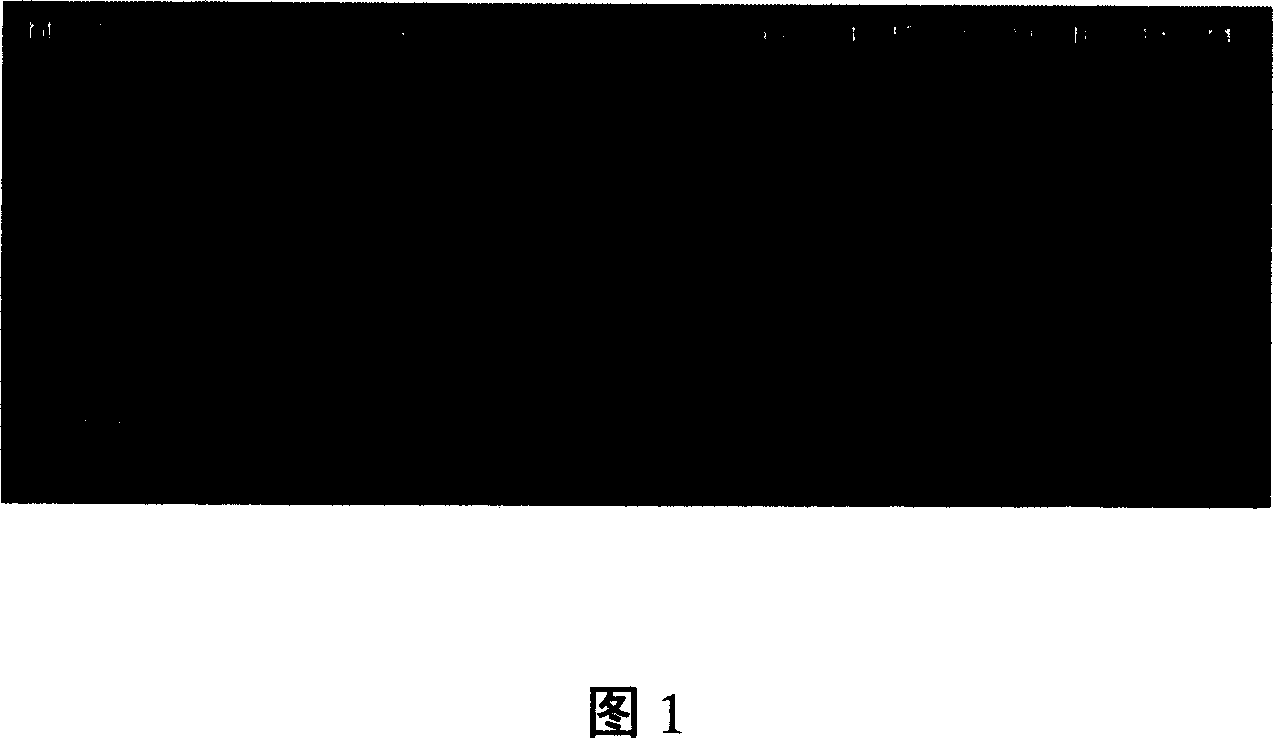Non-embryo transgenic process for preparing transgenic cotton
A genetically modified cotton technology, applied in the field of cotton genetic transformation, can solve the problems that the cycle still needs 6 to 10 months, the exogenous gene variation is large, the cycle is long, etc., and it is easy to master and operate, with high transformation efficiency and low cost. Effect
- Summary
- Abstract
- Description
- Claims
- Application Information
AI Technical Summary
Problems solved by technology
Method used
Image
Examples
Embodiment Construction
[0027] The present invention will be further described below in conjunction with the examples, but they are not intended to limit the scope of protection of the present invention.
[0028] The specific method of transforming Liaomian No. 7 with Ac / Ds gene:
[0029] 1. Preparation of sterile vaccines
[0030] The seed coat of cottonseed (Liaomian No. 7, purchased from the Germplasm Resource Bank of Cotton Research Institute, Chinese Academy of Agricultural Sciences) was peeled off. Put the cotton seeds in 70% alcohol for 1-2min on the ultra-clean bench. Then add 0.1% HgCl 2 Soak in medium for 7min. Wash with sterile water three to six times, one minute each time. Put them into seedling medium (1 / 2MS+0.8% agar+tap water), and germinate at 24°C for 5-10 days. 16 hours of light and 8 hours of darkness per day.
[0031] 2. Preparation of Agrobacterium culture medium
[0032] The exogenous gene Ac / Ds was loaded into pBI 121 (purchased from Baierdi Company), introduced into Ag...
PUM
 Login to View More
Login to View More Abstract
Description
Claims
Application Information
 Login to View More
Login to View More - R&D
- Intellectual Property
- Life Sciences
- Materials
- Tech Scout
- Unparalleled Data Quality
- Higher Quality Content
- 60% Fewer Hallucinations
Browse by: Latest US Patents, China's latest patents, Technical Efficacy Thesaurus, Application Domain, Technology Topic, Popular Technical Reports.
© 2025 PatSnap. All rights reserved.Legal|Privacy policy|Modern Slavery Act Transparency Statement|Sitemap|About US| Contact US: help@patsnap.com

